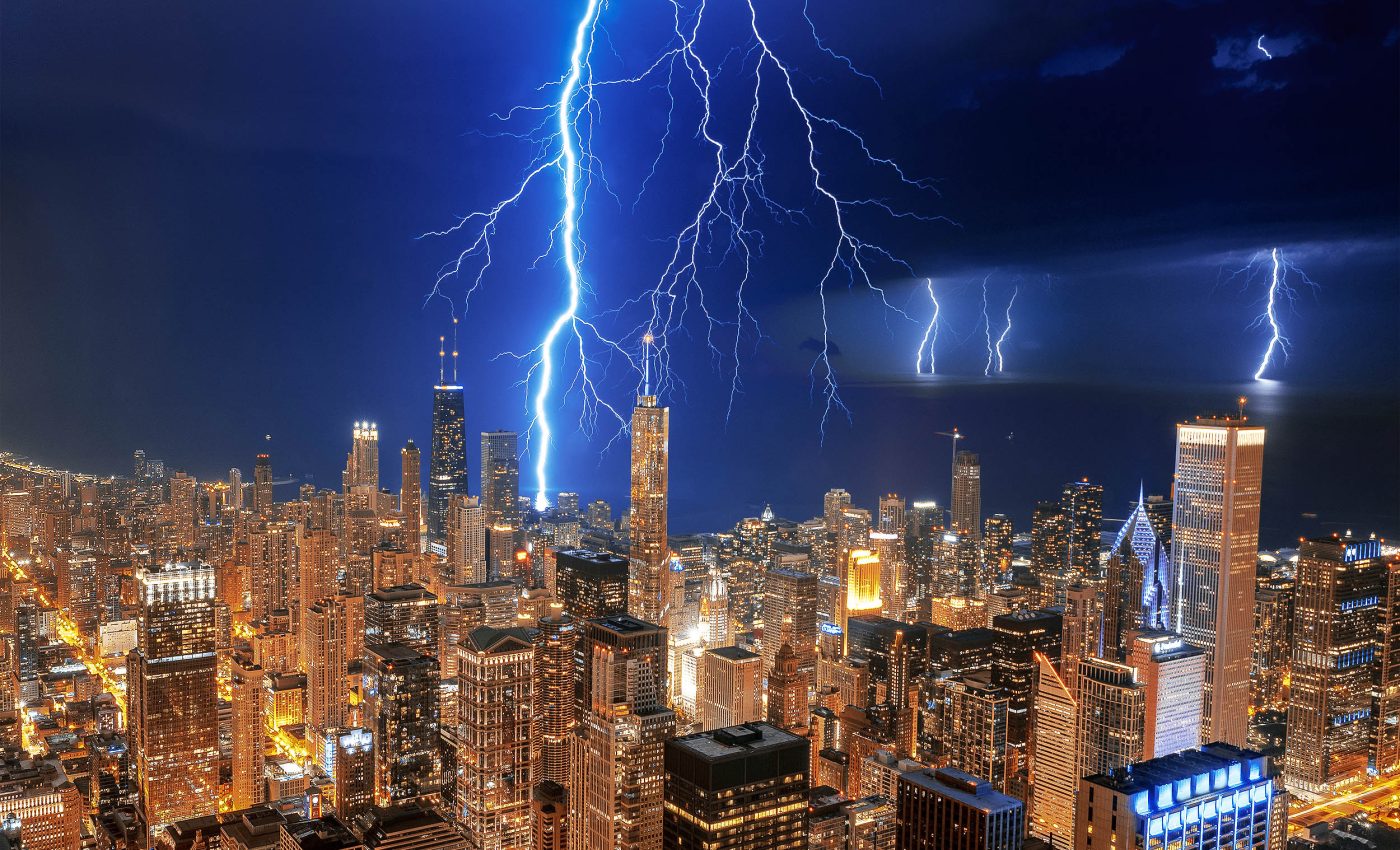
Lightning captured creating gamma ray bursts on Earth, which normally come from space
Lightning is an incredibly powerful force of nature, yet only in recent decades have researchers acquired the tools to begin to understand how it works. A new multi-sensor analysis spotted a terrestrial gamma ray flash blasting out of a thundercloud just moments before two lightning pathways collided.
“The ability to study extreme processes such as TGFs originating in lightning allows us to better understand the high-energy processes occurring in Earth’s atmosphere,” said lead researcher, Yuuki Wada, from The University of Osaka.
Gamma radiation on Earth
Terrestrial gamma-ray flashes usually appear in fleeting bursts. They have been linked to energetic electrons racing through electric fields high above ground.
Most gamma-ray sources are thought to reside far beyond Earth, yet scientists now realize lightning can produce powerful photons in our own skies.
Heavy charges in a storm can propel electrons close to light speed, letting them emit short, forceful pulses of gamma rays.
“Some mysteries remain, but this technique has brought us closer to understanding these fascinating radiation bursts,” said senior author, Harufumi Tsuchiya, from The University of Osaka.
Experts were uncertain how these electric surges became strong enough to produce such potent flashes.
Rare lightning-gamma event
A team stationed near Kanazawa in central Japan used a combined system of optical, radio-frequency, and high-energy detectors to monitor winter storms.
This array recorded a flash that matched a negative leader descending from a thundercloud and a channel rising from the ground.

The paths nearly touched when the surrounding electric field rose sharply. That collision triggered an intense discharge measured at -56 kiloamperes, confirming the enormous energy transfer at play.
This brief interval offered a rare peek into something scientists once thought unobservable. By locking onto the flash and mapping its timing with lightning strokes, the setup caught a phenomenon most equipment would miss.
Lightning paths and gamma rays
Lightning leaders are electrified channels that carry charge upward or downward. When a positive leader travels up and meets a negative one moving down, the electric field between them concentrates.
Investigators have long suspected that this meeting point can fire off bursts of high-energy radiation. Observations suggest electrons there gain enough momentum to produce gamma rays.
These flashes happen so quickly that catching them requires extremely precise sensors. Ground-based studies in the 1990s hinted at such bursts, spurring more intense campaigns to understand how lightning channels might behave.
Delayed radiation from neutrons
Scientists also noticed something odd after the main gamma-ray flash ended. For nearly 80 milliseconds afterward, a lingering signal was picked up, especially by the high-sensitivity plastic scintillator.
This prolonged glow wasn’t from the original flash but likely from photonuclear reactions – where ultra-high-energy photons slam into atmospheric atoms, releasing neutrons.
These neutrons then slow down and trigger further gamma-ray emissions as they’re captured. This faint afterglow is another marker that what was observed was no ordinary lightning event.
How lightning creates gamma rays
The timing of this entire event was remarkably precise.
The first gamma-ray photon was detected just 31 microseconds before the main lightning channels touched, and the full flash ended about 20 microseconds after the collision.

Researchers estimate the downward negative leader moved at nearly 1.8 million meters per second. That’s about 4 million miles per hour – fast enough to stretch over 2,700 miles in just one second.
The upward positive leader was a little slower, but still incredibly quick at nearly half that speed.
What does all of this mean?
Facilities like broadcast towers and power grids can take a severe hit from stronger surges than typical lightning strokes.
Research into these extreme pulses may guide how to fortify sites where large currents could pose a threat.
Understanding these gamma ray flashes also reveals how our atmosphere responds to intense energy shocks.
Some scientists believe these findings could help refine models for ionization events during severe storms.
Better data from multi-sensor observations can serve as stepping stones for robust lightning protection.
Enhanced tower designs and upgraded grounding strategies may become the norm if more flashes are confirmed in storm-prone regions.
Lightning continues to surprise
Future field projects aim to locate similar flashes in diverse climates. More advanced radiation monitors are planned to see whether these events appear in ordinary thunderstorms or mainly in special conditions.
Studies in varied locations, including coastal winter storms, may unearth additional factors that spark this phenomenon. Efforts to compare lightning-driven processes to cosmic-scale events are also emerging.
Scientists hope they can soon estimate where and when these intense fields are most likely to form. That knowledge could help pilots, power providers, and weather officials reduce surprises when lightning strikes.
This discovery shows how a simple meeting of charges in a cloud can unleash surprising bursts of energy. It reminds us that even the most familiar weather occurrences can hide astonishing secrets.
The study is published in the journal Science Advances.
—–
Like what you read? Subscribe to our newsletter for engaging articles, exclusive content, and the latest updates.
Check us out on EarthSnap, a free app brought to you by Eric Ralls and Earth.com.
—–













